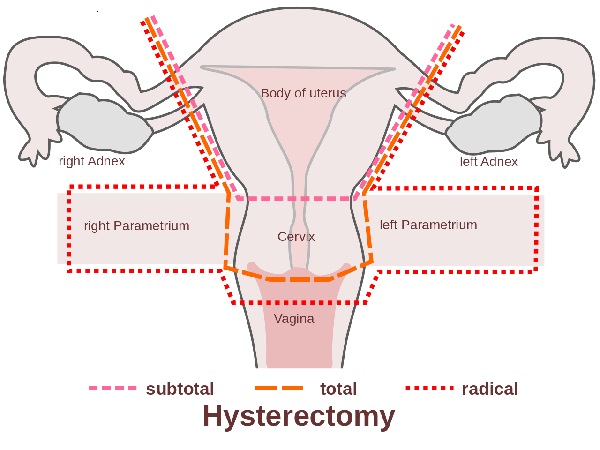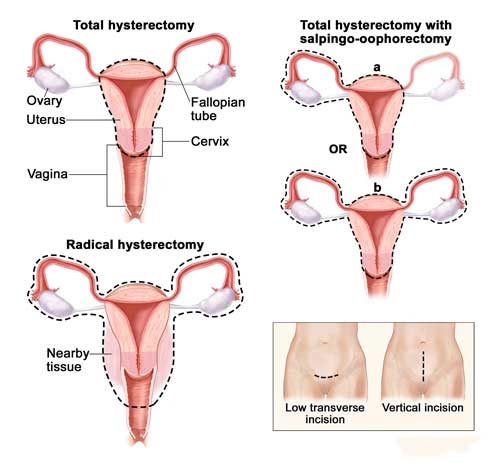Hysterectomy is the surgical removal of a woman's uterus. Removing your uterus means that you can no longer become pregnant. Hysterectomy is used to treat many women’s health conditions.
Some of these conditions include the following:
- Uterine fibroid (this is the most common reason for hysterectomy)
- Endometriosis
- Pelvic support problems (such as uterine prolapse)
- Abnormal uterine bleeding
- Chronic pelvic pain
- Gynecologic cancer
Hysterectomy has broadly three procedures, but the type of procedure used often depends on the condition being treated:

